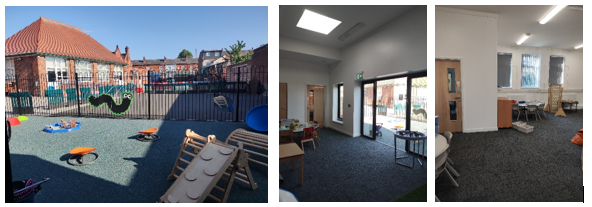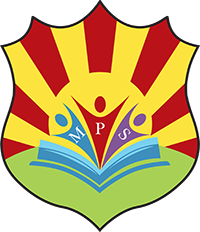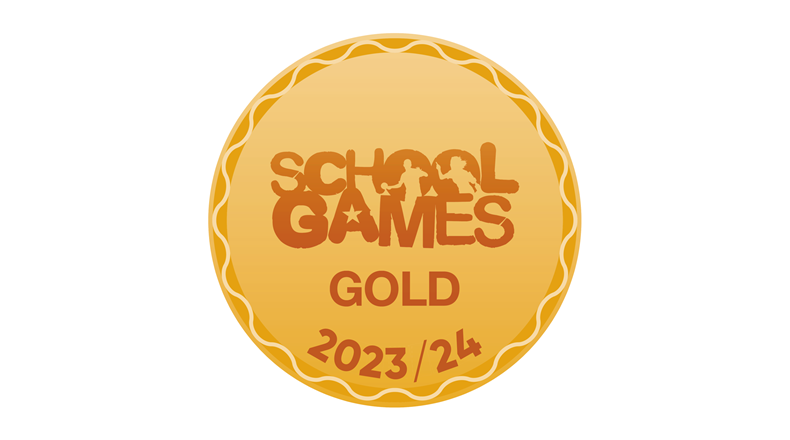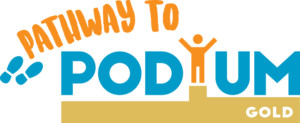Resource Base
Resource Base - Introduction and Information
Marlborough Primary School opened our Resource Base in April 2025 to support the needs of young people within the local community with a formal diagnosis of Autism Spectrum Condition (ASC).
Marlborough Resource Base staff strive to provide an environment where children and their families feel safe, welcome and supported. The Resource Base is staffed by a specialist team including a teacher and specialist teaching assistants; all with a wealth of experience working with children with a diagnosis of Autism and other identified complex needs. The Resource Base team work closely with the teaching staff in the main school as needed based on year groups for integration and developmental needs. Staffing requirements and ratios are based on our current cohort and individual needs of the young people.
We aim to enable every young person to become the very best they can be by nurturing and encouraging their individual strengths and interests, whilst giving them opportunities to learn new and exciting things in a safe and secure learning environment. All young people are supported to develop and use strategies that help them to overcome and cope with challenges they are faced with, developing them into resilient young learners.
Marlborough Primary School Resource Base, focuses on delivering a specific educational programme for children identified with an Educational Health Care Plan and a formal diagnosis of ASC, for whom the Local Authority deem Resource Based provision to best meet their needs. Young people are placed within the Resource Base by the Special Educational Needs Assessment and Review Service (SENAR).
Marlborough Primary School has 22 designated places for young people with an EHCP with a diagnosis of ASC within our Resource Base provision both Hive and Honeycomb.
A tailored curriculum is provided to meet the individual needs of our Resource Based young people, to develop the ‘whole child’: balancing the development of life and social skills with academic learning.

Resource Based young people are grouped according to need, age and ability, and have access to a wide range of activities, including the National Curriculum. They work in small class groupings with high staff ratios. The young people are encouraged to work with different adults to help them gain independence and life skills. Through an understanding of the ‘whole young person’, their sensory, communication, attention and developmental levels enables us to think about where the young person is and identify next steps within their learning.
Resource Based young people access the mainstream environment and work alongside their mainstream peers where appropriate. Attainment and progress are tracked using a ‘small steps’ approach that shows progress in clear and precise stages. We use several tools to monitor attainment and progress:
- including National Curriculum assessment tools (Insight)
- Birmingham toolkit tracker for Individual Teaching Plans
- Early Years assessment framework
- AET (Autism Education Trust) Progression framework.
- SCERTS targets
Across school, we are continuously ensuring that the school environment and all classes are Autism Friendly to support the young people in those classes and allow access to mainstream for all when appropriate. This ensures that all staff are able to support children with Autism and understand their needs. All of our school staff are trained by in Attention Autism training.
Our Resource Base young people have weekly lessons with our trained sports coaches. This allows the children to build relationships with other adults in school in preparation for their future.
We are always here to help and support parents and families at home.
Ways we can help:
- Be there to listen when you need support.
- Providing strategies and resources that work in school.
- Offering training to support you at home.
- Sign posting to services (see list below).
- Making referrals to relevant professionals or organisations.
Attention Autism
Attention Autism
Attention Autism is a learning approach created by speech and language therapist Gina Davies, that aims to develop natural and spontaneous communication skills in Autistic young people through the use of visually based and highly motivating activities.
Aims of Attention Autism:
- To engage attention
- To improve joint attention
- To develop shared enjoyment in group activities
- To increase attention in adult-led activities
- To encourage spontaneous interaction in a natural group setting
- To increase non-verbal and verbal communication through commenting
- To build a wealth and depth of vocabulary
- To have fun
Stage 1 Bucket and focus attention
A bucket is filled with visually engaging toys, aiming to teach children how to focus their attention. The adult leader presents a toy to the group and uses simple vocabulary to make comments on the objects.

Stage 2 The attention builder
Highly appealing and visually stimulating practical activities are presented to the group by the adult leader. This stage aims to sustain concentration and attention for a longer period.

Stage 3 The Interactive Game – Turn Taking and Shifting Attention
A simple engaging activity is demonstrated by the adult leader who then invites some children to have a turn. Children learn how to shift their attention to their own individual participation and then back to the group. They also learn essential skills of sharing, understanding missing a turn, turn-taking and waiting.

Stage 4: Individual activity – Focus, Shift and Re-engage Attention
The adult demonstrates a simple creative task and then gives each child an individual kit to copy. Children focus their attention in a group to watch a demonstration, then shift their attention to an individual activity and lastly return attention to the group to show their completed task. Children also build their independence skills and following instructions skills.

Attention Autism - AST (Autism Spectrum Teacher)
Communication and Autism Team (CAT)
At Marlborough Primary School,
our CAT is Viv Walters. She has worked with the school for several years and has a strong relationship with our young people, parents and staff.
She provides support in school for staff to develop a greater understanding of autism and to empower staff to apply good practice. We aim to have an Autism Friendly environment across the whole school so she reviews our universal offer as well as working with our Autistic young people in school and the Resource Base to provide support, advice and strategies to promote independence and help them reach their full potential
-
Here are some Autism Friendly Strategies used in school and the Resource Base:
- TEACCH
- PECS
- Social Stories
- Work Stations
- Visual timetables, Now and Next boards, Work-systems
- Whole school behaviour policy linked to Autism, trauma informed practice and therapeutic input
- Communicate in Print labelling across school
- All staff have updated Attention Autism training
Fine and Gross Motor Skills
Many young people with ASC have underdeveloped fine and gross motor skills. We use a variety of techniques to support them in developing these skills including threading, writing and mark making and sensory circuits (balancing and climbing).
The Imagination Tree - 40 Fine Motor Skills Activities
Octupational Therapy
Occupational Therapy
Occupational Therapy (OT) supports young people who have physical, sensory or cognitive needs. It supports young people to develop life skills that allow them to become more independent and carry out daily tasks that they might find difficult.
This might include support to help with:
- Eating
- Washing
- Using the toilet
- Fine or gross motor
- Playing
Often young people with autism present with motor, perceptual or sensory challenges. They may be oversensitive to touch, noise or sound. Their attention and behaviour can be affected by these physical or sensory challenges.
Occupational Therapists provide specialist assessments to identify the underlying difficulties impacting on the young person’s function (for example motor, sensory or perceptual skills). They will then provide therapeutic intervention and recommend appropriate strategies to help children overcome these difficulties working closely with Resource Based staff and families so they are supporting all aspects of the young person’s life to enable them to be as successful as can be.
PECS (Picture Exchange Communication System)
PECS consists of six phases and begins by teaching an individual to give a single picture of a desired item or action to a ‘communicative partner’ who immediately honours the exchange as a request. The system goes on to teach discrimination of pictures and how to put them together in sentences. In the more advanced phases, individuals are taught to use modifiers, answer questions and comment. Many young people use PECS and build upon this knowledge to become more verbal in their communication.

To find out more visit: https://nationalautismresources.com/the-picture-exchange-communication-system-pecs/
Sensory Provision
We have a sensory room with a variety of apparatus that help young people to navigate and manage their sensory needs. All young people have a sensory assessment which highlights their sensory requirements and appropriate provision is then put in place to support each. These might include ear defenders, weighted blankets, fidget toys, trampolines, slides, twisting or spinning devices etc. We also run different sessions using lights, sand and water play, bubbles and play dough.
SCERTS
SCERTS is an overarching approach to autism education created by a multidisciplinary team of experts. The letters in the name stand for Social Communication, Emotional Regulation, and Transactional Support. SCERTS is not a therapeutic technique; rather, it is a model for engaging autistic children which, when properly applied, "provides specific guidelines for helping a child become a competent and confident social communicator while preventing problem behaviours that interfere with learning and the development of relationships. The resource base implements and utilises SCERTS in their assessment and monitoring processes.
SALT (Speech and Language Therapy)
Our young people in the Resource Base may receive SALT support following assessments which outline their strengths and needs, and highlights recommendation for special educational provision. As identified our young people with ASC may have communication difficulties which can affect their:
- understanding and talking skills,
- social communication skills,
- speech difficulties,
- stammering,
- selective mutism.
Targets are agreed and form part of their daily routine in the Resource Base and the young people will then receive sessions with our teaching staff or therapists.
Visuals and Communicate in Print
Visuals, made using the Communicate in Print programme, are a vital tool that enable young people with ASC to navigate through life. Visuals are key to supporting the structured environment we create in Resource Base and support the developing of confidence and independence as well as alleviating anxiety about what is coming next. These include visual timetables, now and next boards and visual work systems and ongoing instructions.
All staff around our school wear a lanyard with a set of visual instructions. This enables all staff to communicate and work with all young people with ASC around the school. It is easier for some young people to interpret a visual cue rather than a verbal one especially when they are anxious.
All classes use a visual timetable to enable all children to navigate their school day, a Now and Next board to encourage engagement and work systems to encourage focus. There are many visual signs around the school to support our ASC learners within the main school.

To find out more please visit: https://www.widgit.com/products/inprint/index.htm




